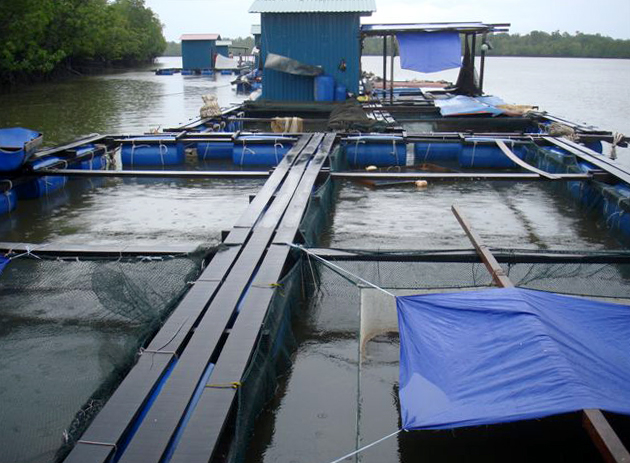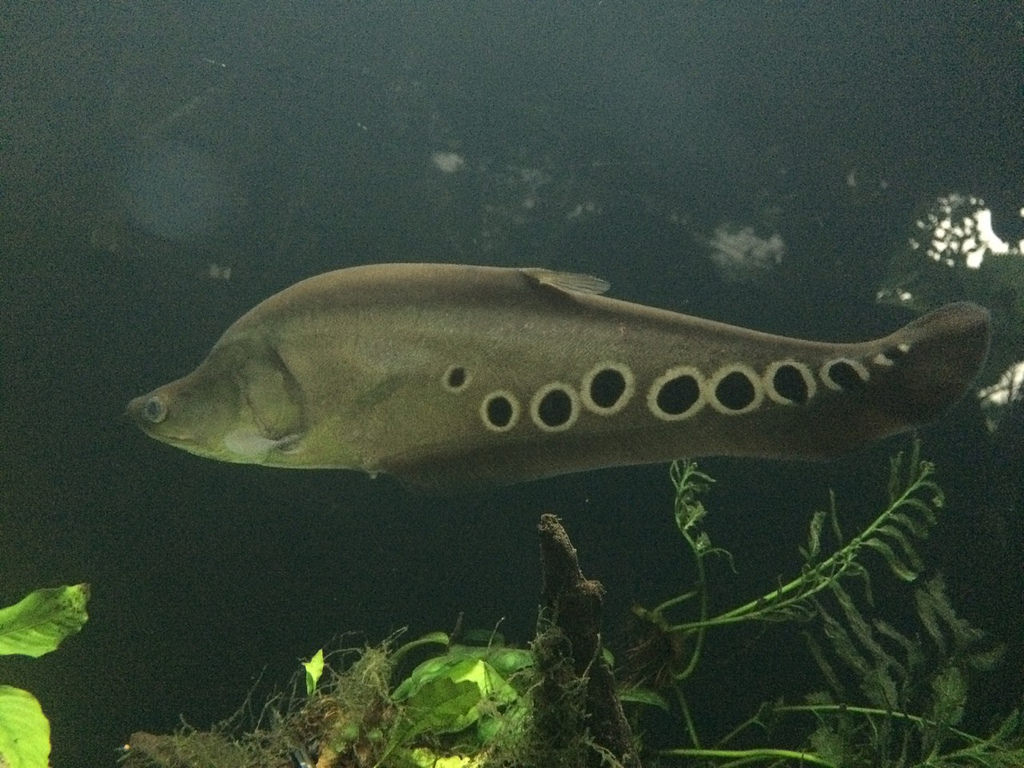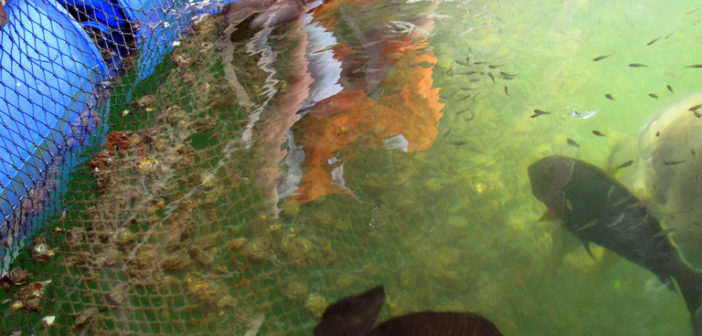Alien fish species have long been known to dwell in Malaysian dams, lakes and rivers, but not much attention has been paid to their existence so far. Piranhas, African catfish, pirarucu (Arapaima gigas), peacock bass, and tilapia, to name a few, are all found in abundance in our waterways, and some are bred in ponds for aquaculture projects. News has surfaced recently of the discovery of two new foreign predatory fish: the earth eater and the black ghost knifefish.
The situation is grave. Experts warn of the potential for ecological disasters caused by these aquatic nuisance species. Ecosystems around the world have been dramatically altered as fish species are shifted around, whether for commercial fishing stock or the aquarium trade.

Fish farm in Kuching, Sarawak, Malaysia. Image credit WorldFish, Flickr, CC BY-NC-ND 2.0
Humans are experts at helping species move from their native habitat into new territory. The new habitat may suit the invader fish so well that their arrival becomes catastrophic for local species. The introduced species are able to multiply at a very rapid rate, and in the absence of natural predators they are wiping out many of Malaysia’s native river species.
Species are transported around the world to fish farms, and when they escape, they become naturalised in many areas causing damage to native species and habitats. Recreational fishing is also to blame for the spread of invasive species. Trade in alien species for aquarium use can result in marine invasions too. Many people keep exotic fish, marine plants, invertebrates or corals in aquariums. Once fish hobbyists have outgrown their interest, or find their fish to be unmanageable once they’ve grown big, they then release their pets into streams and lakes.
It may seem like the humane thing to set Nemo free in the ocean, but such impulses pose an enormous threat to native ecosystems. Even something as seemingly harmless as a goldfish can disrupt local food webs by preying on fish eggs and small invertebrates, and cause excess algal growth by rooting up plants and releasing nutrients from the riverbed.
Anglers, usually ignorant of biological processes, assume that adding more fish to a river, dam, or lake will somehow help nature. Certain freshwater fish species used for recreational angling are released into rivers, dams and lakes – without undertaking any environmental impact assessment or monitoring – for the sole purpose of providing enjoyment for anglers. This practice has become so widespread that people often think that some of the invasive species are actually native ones.
At a UN conference on alien species in Norway in 1996, experts from 80 countries concluded that “alien invasive species were a major threat to biodiversity conservation and probably the greatest threat after habitat destruction.”

Clown knifefish, a highly invasive species non-native to Malaysia, at an aquarium in Kuching. Image courtesy Wolf Gordon Clifton / Animal People, Inc.
The fight against invasive species is a losing battle so far. Eradication is impossible for many invasive species, as they are already established beyond control. Also, the general public does not know or care about invasive species, and too few anglers, fish farmers, or aquarium owners practice the necessary preventive behaviors to prevent non-native fish from becoming established in the ecosystem.
Management of invasive fish species requires urgent attention. Friends of the Earth Malaysia (FOEM) calls on the Fisheries Department to: (1) enforce the law in dealing with those found to be importing, selling and keeping alien predator fish; (2) halt the introduction of alien species solely for the pursuit of pleasure; and (3) ban aquarium shops from importing banned species, and prohibit fish farms from breeding species that, when escaped, could grow to monstrous size.
Community participation and awareness are critical to preventing the introduction and halting the spread of invasive species.
Featured image: fish farm in Langkawi, Malaysia. Image credit Laura Billings, Flickr, CC BY-NC 2.0





